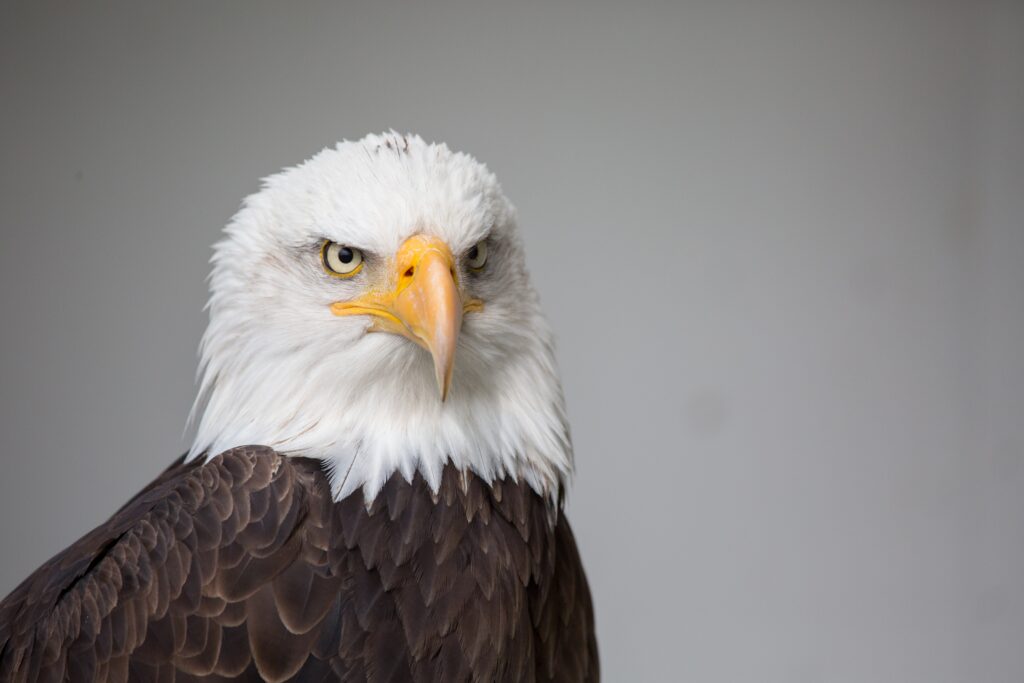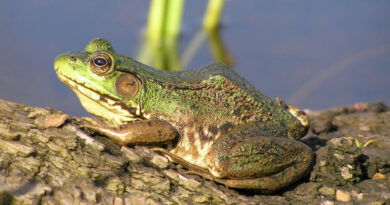Feathered Friends: The incredible bald eagle, a force of nature
Feathered Friends with Sherrie Versluis
There is not a more revered bird of prey than the bald eagle. This is without a doubt one of the most recognized birds in the world. Their unmistakable appearance, with that white head and tail contrasting with their dark body, along with fierce, bright yellow eyes and beak, delivers a serious feeling of power. Bald eagles are plentiful around large bodies of water and a regular sight in cottage country throughout Canada. During migration they are often spotted hunting along rivers and smaller bodies of water in city limits, causing quite a stir among people who haven’t seen such a sight before.
The males and females look the same but the females are nearly 25 per cent larger. Immature bald eagles are brown in colour till their fourth or fifth year when they will achieve adult plumage and reach sexual maturity. A mature bald eagle will have a wingspan just over six feet, weigh nearly 15 pounds and stand about 30 inches tall. They have a lifespan of about 30 years in the wild but have lived longer in captivity, up to 50 years. It is estimated that bald eagles have a less than 50 per cent chance of surviving to adulthood.
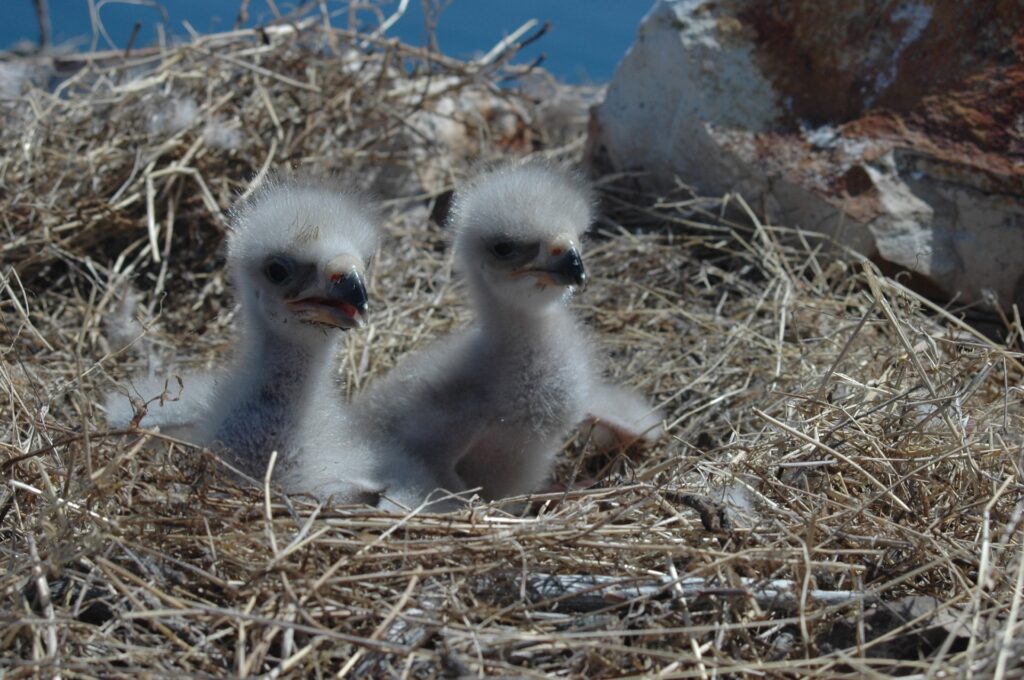
Bald eagles mate for life but if a mate dies they will accept a new partner. The courtship of these large birds is quite a sight. It is a spectacular scene, involving loud calls accompanied by elaborate aerial displays. They can be seen doing incredible swooping manoeuvres and cartwheels, even locking talons together as they tumble through the air. Bald eagles have the largest nests of any bird in North America. The pair will return to the same nest each year, adding to it until it reaches 13 feet deep and eight feet wide and weighs one metric tonne. The largest nest ever noted was in Florida and was 20 feet deep, 9.5 feet wide and weighed 2.7 metric tonnes. This was the largest nest of any bird ever recorded. Nests are usually built in dead trees near water, where the parents can easily hunt for fish. Typically, up to three eggs are laid, but it is rare for the third chick to survive as the two older chicks dominate in the competition for food and sometimes even kill the runt. Incubation time is about 35 days and the fledging stage is about 12 weeks later. During this time both parents take active duty in caring for and feeding their young.
Most people assume a bald eagle’s diet consists solely of fish but they actually eat much more than that. They will eat live or dead mammals and can often be seen on the sides of roads eating road kill. They will eat waterfowl like geese and ducks, along with rabbits, squirrels and any other creature they may have an opportunity to catch. They have even been seen stealing fish away from other birds, like osprey, in mid-air. Eagles have been reported to fly at speeds of almost 160 kilometres per hour as they head toward the water, then glide just above it to grab a fish.
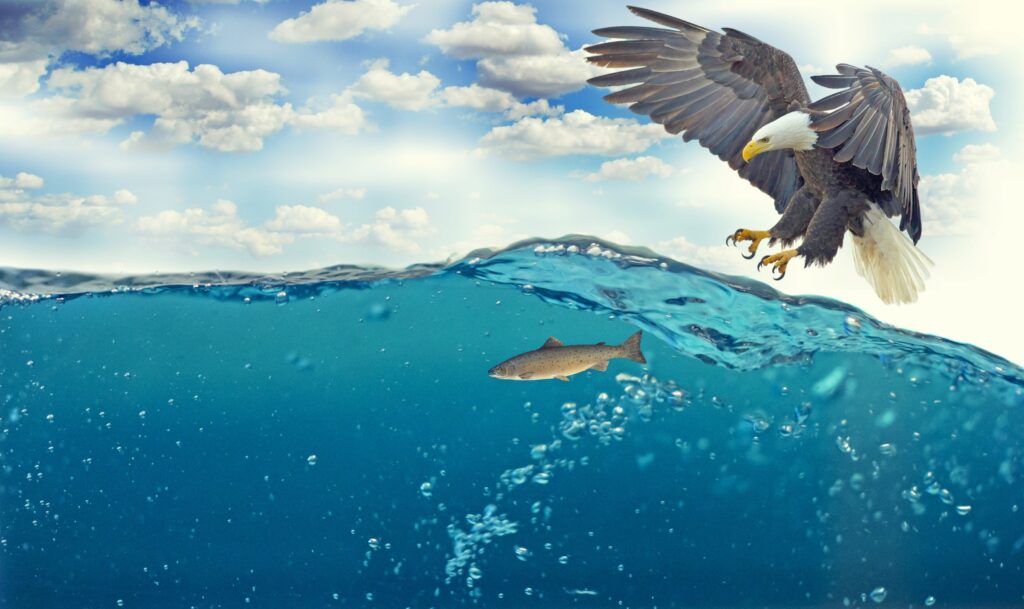
It is no secret that bald eagles have twice faced extinction. The first major decline occurred in the late 1800s when settlers destroyed habitat by cutting forests and creating farmland, and even killed the eagles themselves. In the late 1940s, another threat, when the infamous spraying of the pesticide DDT wreaked havoc on many bird populations. Even though bald eagles are a protected species, they face many other threats to their populations. There are natural hazards such as weather, but nearly two-thirds of all eagle deaths are human-caused by shooting, trapping, secondary poisoning (when animals like coyotes are poisoned then just left to die), electrocution by power lines and wind turbines.
There are still areas where lead pellets are used for hunting, and when a goose or duck is injured and not killed, the eagle will catch them and end up ingesting the lead, which causes a very slow and painful death.
The overall population of bald eagles in Canada is good, but mortality rates are still very high with an ever increasing threat of human-caused challenges. Hopefully, with many protected spaces where they breed, and limited human disturbance, their numbers will continue to increase so that this majestic bird will be around for many generations. They are, indeed, a sight to be seen.
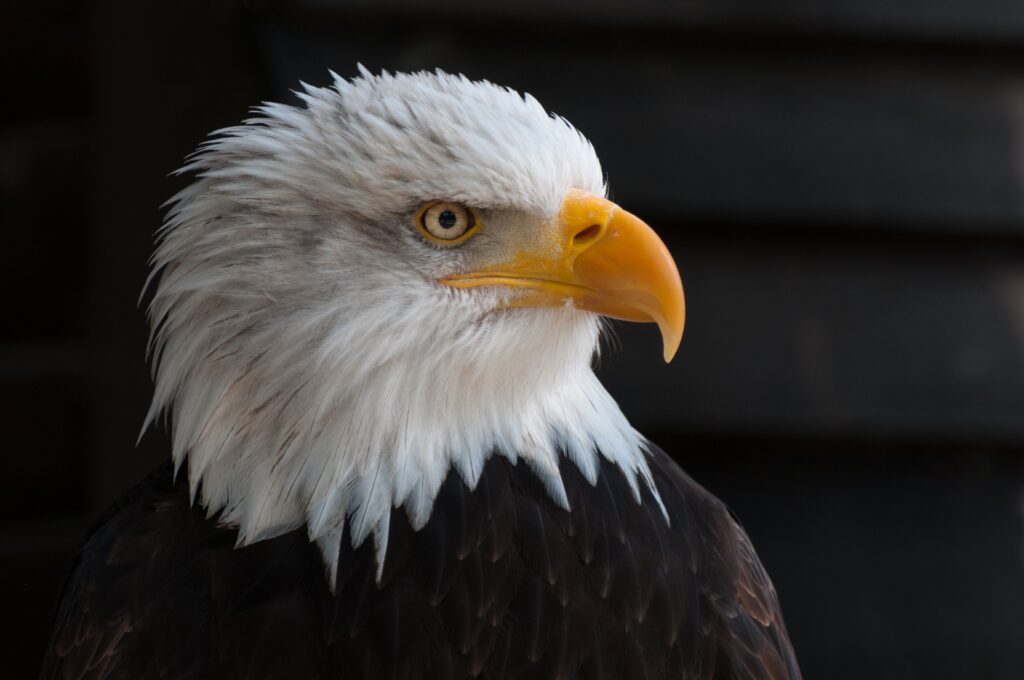
Sherrie Versluis owns The Preferred Perch and is an avid birder.


